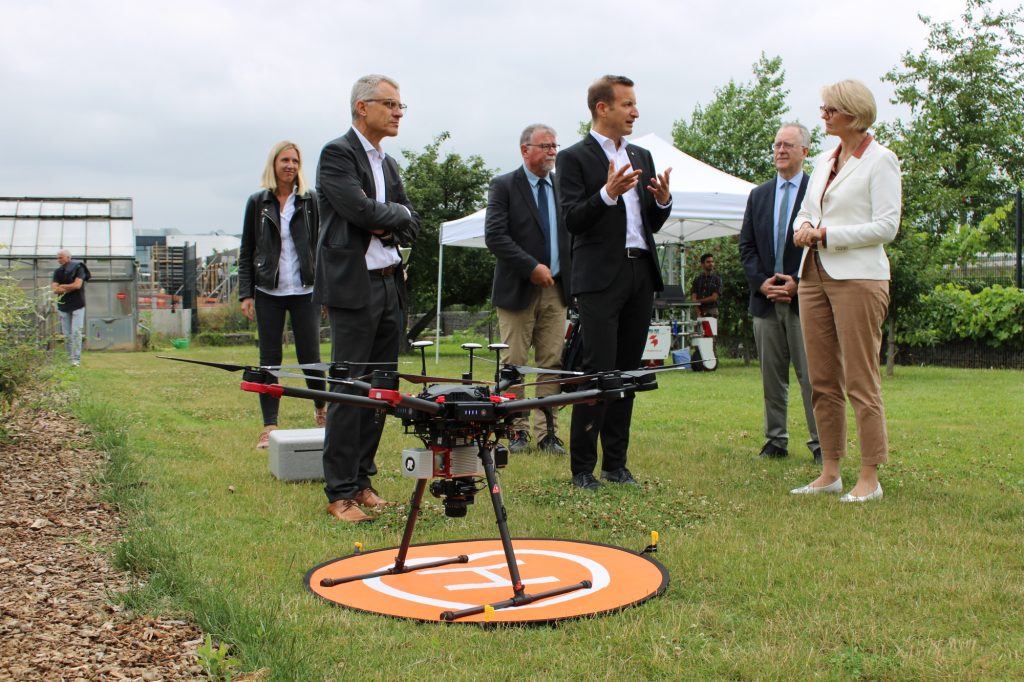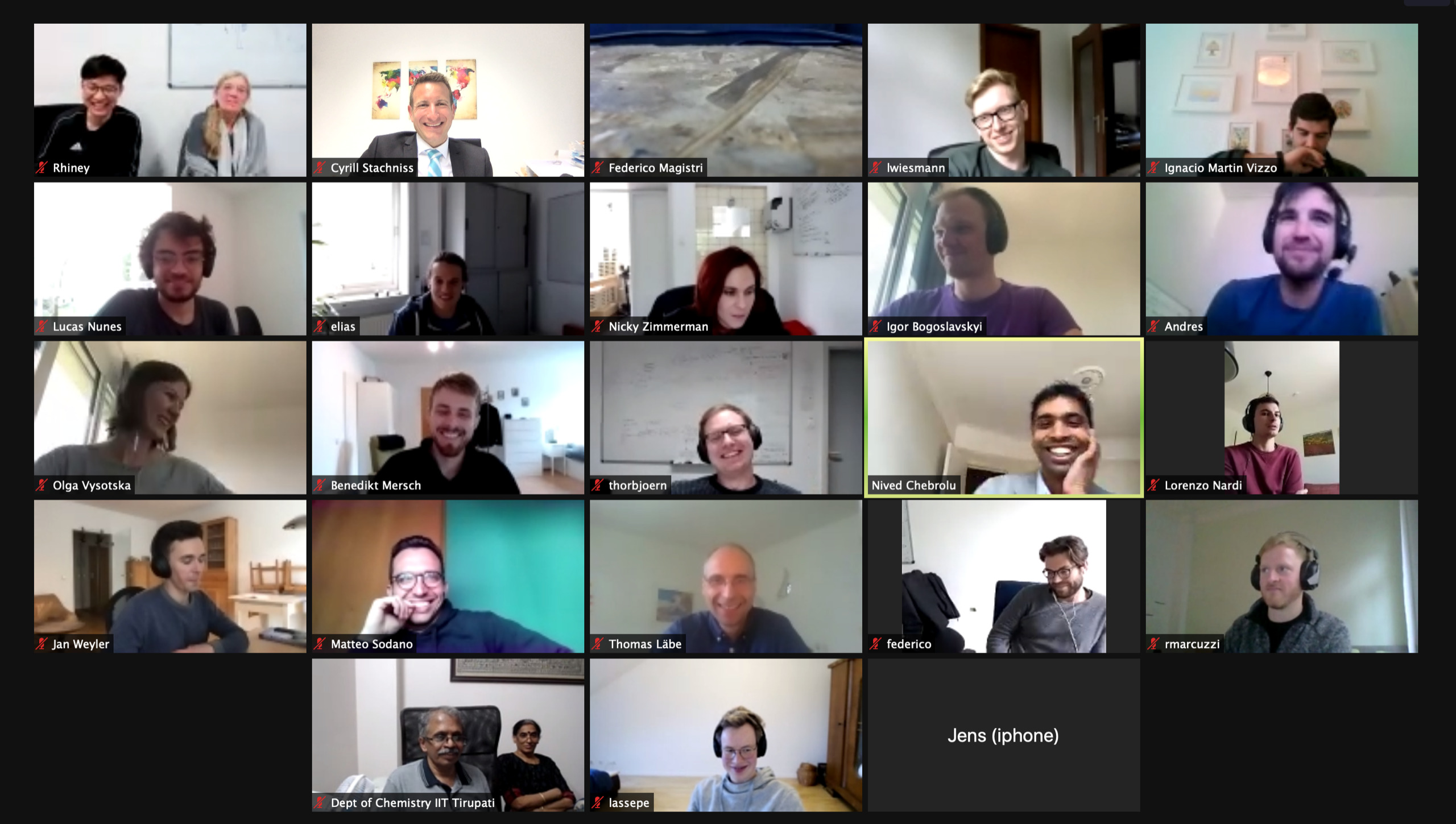
Summary
Due to a continually growing world population, the demand for food and energy increases continuously. As a central source of food, feed, and energy, crop production is therefore called upon to produce higher yields. To achieve high crop yields, weed control, fertilization, and disease control are essential tasks. Nowadays, these tasks are performed by uniformly applying large amounts of agrochemicals, such as herbicides and fertilizers, to our fields. At the same time, we need to reduce the ecological footprint of agricultural production to achieve the required sustainability to protect our environment for future generations.
Autonomous agricultural field robots offer the potential for a drastic reduction of applied agrochemicals through selectively treating individual plants and weeds in the field. For selective weeding or fertilizing, a robot can be equipped with different actuators such as selective sprayers, mechanical tools, or even lasers. A prerequisite for selective and plant-specific treatment is that the robots can distinguish and locate the plants and weeds in the field. With this information, the robots can decide where and when to trigger the actuators to perform the treatment selectively. In contrast to ground robots, unmanned aerial vehicles (UAVs) can monitor farmland on a larger scale without interacting with the soil. In combination with a vision-based system for the classification of plants, UAVs serve excellent capabilities to retrieve the status of a field on a per-plant basis in small amounts of time.
In this thesis, we develop novel vision-based plant classification systems that enable agricultural ground robots for online in-field interventions and for aerial robots to perform accurate monitoring of the plantation. We investigate traditional and more modern machine-learning approaches based on random forests and fully convolutional neural networks to perform the necessary classification of the crop plants and weeds. We propose a coupled plant and stem classification system that jointly classifies the crop plants and weeds, further distinguishing herbs from grasses, and additionally provides the precise stem locations at the same time. Based on the classification output, the robot can select the most effective treatment for the current situation in the field.\\
A major challenge for vision-based classification systems is that agricultural robots need to operate in different field environments under drastic changes in the visual appearance of the plants, weeds, and soil. For real-world applications, plant classifications systems not only need to provide a high performance in known fields but also need to be robust to new and changing field conditions. This thesis aims at improving the generalization performance of plant classification systems for robots that operate under different environmental conditions. We propose two vision-based classification systems that, in addition to visual information, exploit the spatial arrangement of the plants in the case of row crops. Such geometric information is typically similar within and across fields and thus less dependent on the visual appearance of the plants. Our approaches exploiting the spatial arrangement of plants provide superior generalization capabilities to changing field conditions compared to state-of-the-art vision-based classifiers.
A further challenge for scalable development of robust plant classification systems is their requirement for large and diverse training datasets. Typically, a classifier needs to be adapted with additional labeled data representing the conditions of the new field environment. However, this procedure comes at the cost of a continuous effort to label new data. We present a semi-supervised online learning approach that combines purely visual classification with geometric classification exploiting the plant arrangement. We show that with only a one-minute labeling effort, our approach provides a classification performance on the same level as classically re-trained classifiers.
We conduct a comprehensive experimental evaluation of the classification systems under real-world conditions using a wide range of field datasets. We collected a large and diverse database in various field environments located in central Europe consisting of around 26,500 labeled images acquired by different field and aerial robots. Using our database, we evaluate different aspects of the plant classifiers considering their performance, generalization capabilities, needed labeling effort, exploitation of additional near-infrared information, and explicitly compare the random forest performance with the one obtained by fully convolutional neural networks. Our experiments suggest that fully convolutional neural networks are well suited for the plant classification task. They provide a better performance than random forest-based approaches, are more robust to changing field conditions, and provide results faster by exploiting dedicated hardware.
All plant classification systems presented in this thesis have been published in peer-reviewed conference papers and journal articles. One of our UAV-based plant classification systems won the best automation paper award at the International Conference on Robotics and Automation (ICRA). Our semi-supervised online-learning approach for plant classification was a finalist for the best application paper award at the Conference on Robots and Systems (IROS).



